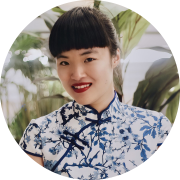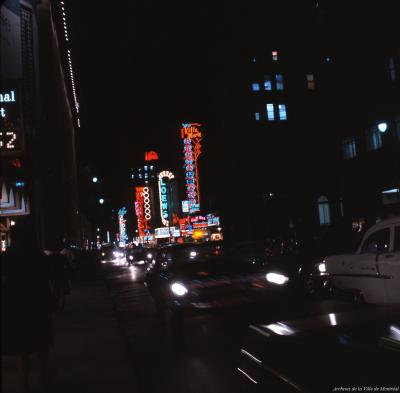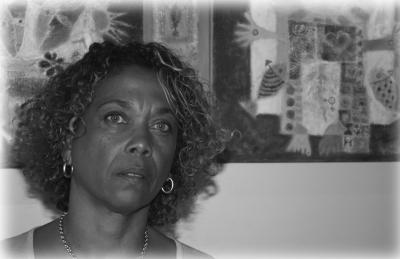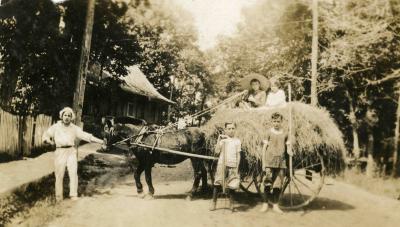Today’s Chinatown faces pressing urban development challenges. A number of groups are working to make the neighbourhood a good place to live—and one that proudly displays its cultural heritage.
A community garden and social hub
Jardin quartier chinois
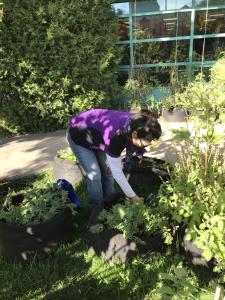
a third-generation Chinese Canadian, took on the project and launched Espace vert du Quartier chinois, the only public greenspace in the area.
Ever since, the garden has remained true to its values, promoting intercultural and intergenerational exchange, raising awareness of food security, and supporting urban agriculture. Independently managed by the community, the garden has become a social hub tended by volunteers from diverse cultural backgrounds. The crops they grow include climbing beans, squash, and corn—mainstays of the Indigenous “Three Sisters” planting method —as well as Japanese mizuna and other Asian vegetables, carefully selected by the garden’s current coordinator, Bill Mersereau. French, English, Mandarin, Cantonese, Taishanese, and even Spanish are spoken in the garden, with hand gestures and a shared love of gardening helping to bridge the gap between languages.
The garden was located in Chinatown for six years. During that time, its members delivered baskets of fresh produce to Chinese seniors with limited mobility, providing them with nutritional food and opportunities for connection. Local seniors also enjoyed taking walks in this green haven in the city and interacting with the gardeners.
The garden has since been relocated outside of Chinatown to the intersection of Parthenais and Masson. Once again, it is helping to foster social connection. One of Janet’s proudest moments is when people who have lived in the same building for years meet for the first time in the garden. These encounters show how vital such a community space can be.
Today, Espace vert du Quartier chinois and the Hôpital chinois would like to bring the garden back to Chinatown. A group has been trying for several years to convince the City of Montréal to let them establish it in the empty lot in front of the hospital. With a local site, the community garden would once again be able to put down roots in Chinatown and start a new chapter in its inspiring story as a place of sharing—one its volunteers hope will continue for a very long time.
Tomorrow’s Chinatown
Quartier chinois - aménagement
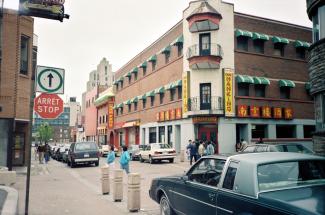
Chinatown has long been the victim of real estate projects that have encroached on its boundaries. In less than fifty years, the once primarily residential neighbourhood became predominantly commercial. Updates to the area—the conversion of Rue De La Gauchetière into a pedestrian zone in 1981 and the construction of decorative arches to mark Chinatown’s entrances—did not contribute elements necessary for its health and vitality as a residential neighbourhood, such as schools, community spaces, and other services. Meanwhile, lack of political representation made it difficult for decision-makers to discern the community’s needs. As a result, gentrification and real estate speculation continue to pose an urgent threat to the neighbourhood.
Today, the community is actively mobilizing to block projects such as a developer’s bid to purchase Chinatown’s most historic section. Several community leaders, the Chinatown Task Force, and allies are working to create a holistic, multi-level strategy to protect the neighbourhood. Among other things, they are urging all levels of government to grant Chinatown cultural heritage status. This measure would safeguard its buildings and support the essential activities that characterize Chinatown today, such as its Asian restaurants and businesses. In addition, it would provide zoning measures more sensitive to the community’s needs and create heritage preservation mechanisms to protect the neighbourhood. A heritage designation would, for instance, give building owners access to provincial and federal funds to restore and revitalize their properties.
The community is also developing a long-term vision for Chinatown through dialogue among community leaders, the Chinatown Working Group, the City of Montréal, local merchants, and residents. The goal is to revitalize the area as a liveable, dynamic neighbourhood by integrating elements essential for residents and visitors. Strategies include measures to green the neighbourhood, provide affordable housing, link the community to social services, establish places of worship, create schools, and develop recreational activities. High housing costs have pushed residents out of the area: their numbers decreased by nearly fifty percent between 2006 and 2016, a decade in which rents more than doubled.
Today, the Chinese diaspora in Montréal and its allies are brimming with ideas to revitalize Chinatown. Urban planning students have submitted development plans that are currently under the city’s review. In December 2020, the City of Montréal issued a symbolic statement of support, recognition, and solidarity for Chinatown, acknowledging its historical and cultural significance. This general statement was welcomed by anti-gentrification activists, who are now awaiting concrete measures from the government. Encouraged by this first step toward the area’s revitalization, the community is looking forward to implementing its vision for the Chinatown of tomorrow, with a focus on protecting the intangible heritage of the entire neighbourhood.
唐人街社区花园《绿色空间》成立于2011年,是名副其实的社交聚点。该花园由林瑞贞在中华医院创办,于2014年成为唐人街唯一的公共绿色空间,其后因土地被接管而搬迁至 Rosemont 区。
公共绿色空间的完全缺乏,始终是唐人街许多城市发展项目的关注点之一。尽管1981年De La Gauchetière街被设为步行街,并搭建了划定该区边界的拱门,然而,唐人街仍缺乏社区空间、公共艺术和廉租公寓。目前,多个团体正在积极工作,努力更好地代表社区的利益,让社区能够参与决策流程,从而使唐人街成为一个既拥有深厚的文化遗产,又能够让人安居乐业的地方。
—
La traduction en chinois simplifié a été faite par Serena Xiong (熊吟) et révisé par Philippe Liu (刘秦宁).
唐人街社區花園《綠色空間》成立於2011年,是名副其實的社交聚點。該花園由林瑞貞在中華醫院創辦,於2014年成為唐人街唯一的公共綠色空間,其後因土地被接管再搬到 Rosemont 區。
唐人街完全缺乏公共綠色空間,始終是唐人街許多城市發展項目關注之一。儘管1981年De La Gauchetière街被設為行人路,並搭建了劃定該區邊界的拱門,然而,唐人街仍缺乏社區空間、公共藝術和便宜住屋。目前,幾個團體正在積極工作,其中包括爭取向政府公道反映唐人街的各種需求,讓社群能夠參與決策流程,使唐人街成為有深厚文化遺產、能夠安居樂業的地方。
—
Traductrice : Wai Yin Kwok.
